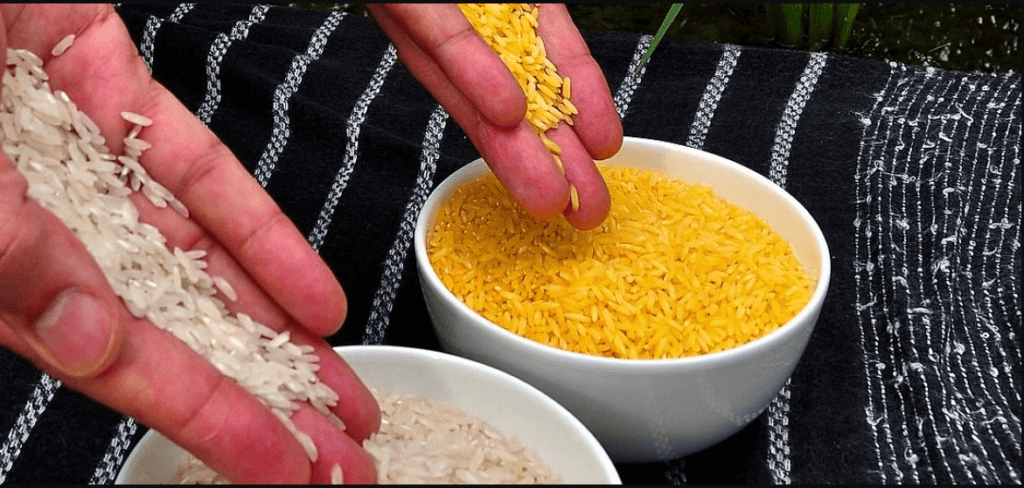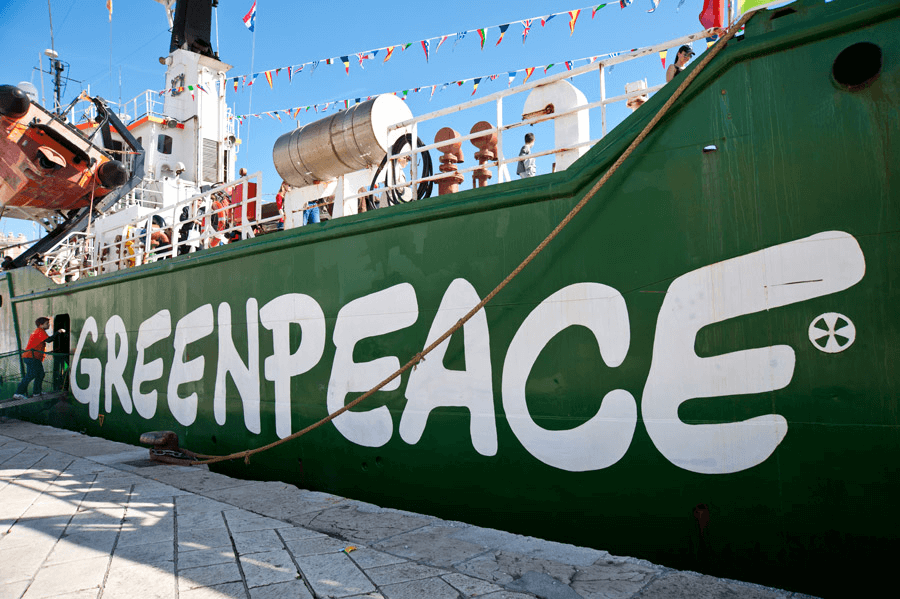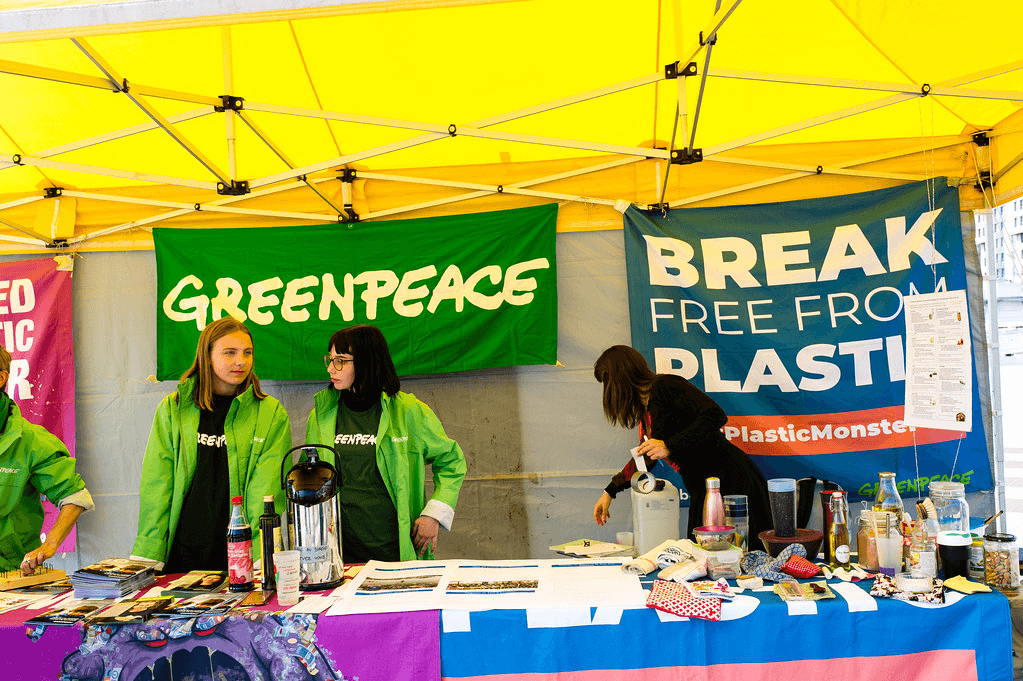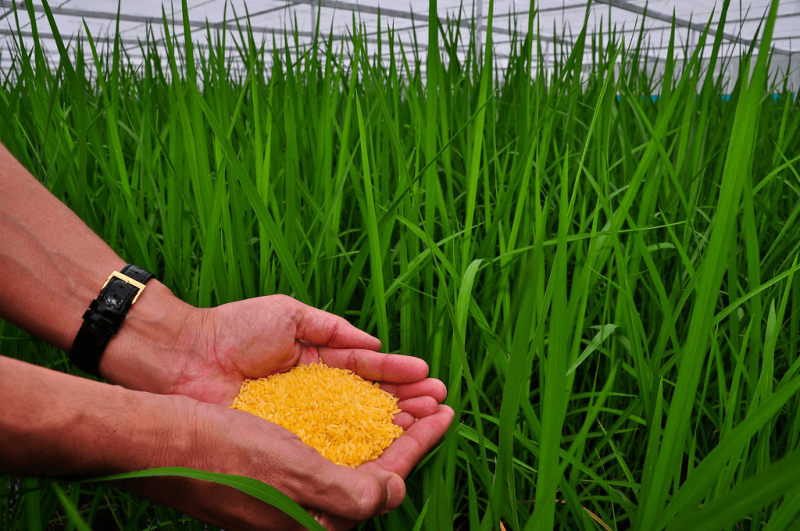From the early days of Greenpeace when its members were dodging harpoons and Japanese whalers in outboard motor boats – remember “Save the Whales!” — it has leveraged media savvy and an aptitude for political theater to become a $400 million-plus per year behemoth with 26 regional offices operating in 55 countries. Greenpeace claims that its goals are to “ensure the ability of the Earth to nurture life in all its diversity.” However, it seems that humans are excluded from those good intentions. Dr. Patrick Moore a cofounder of Greenpeace, said it “no longer cares about people and that it had become more interested in politics than science.”(1) The organization has relinquished nurturing the lives of humans as well as science: For years, Greenpeace’s prodigious PR machine has been spearheading an effort to deny millions of children in the poorest nations an essential nutrient they need to stave off blindness and death. A precursor of that nutrient, vitamin A, has been introduced ingeniously into genetically engineered rice (“Golden Rice”). (It is readily converted into vitamin A in the body.) However, we’re getting ahead of ourselves.
Farmers and consumers in less-developed countries will benefit most from the myriad improvements of genetically engineered (GE) plants. Many varieties of GE plants improve food security, which is most critical in less-developed countries, where the success of a crop can literally spell the difference between starvation and survival. In their 1999 Canadian federal tax filings, Greenpeace admitted that they seek not the prudent, safe use of GE foods or even their labeling; rather, they demand nothing less than these products’ “complete elimination [from] the food supply and the environment.”
When asked if future scientific research could change their position, Lord Melchett (2), the head of Greenpeace, said: “I am happy to answer for Greenpeace…It is permanent and definite and complete opposition…” As Patrick Moore said, science was no longer important to Greenpeace.
A prominent target of Greenpeace has long been new GE plant varieties collectively called “Golden Rice.” Rice is a food staple and a primary source of calories for hundreds of millions, especially in Asia. Although it is an excellent source of calories, it lacks certain micronutrients necessary for a complete diet. In the 1980s and ’90s, German scientists Ingo Potrykus and Peter Beyer developed the “Golden Rice” varieties that are biofortified, or enriched, by genes that produce beta-carotene, the precursor of vitamin A.

The World Health organization estimates that 250 million people suffer from Vitamin A Deficiency (VAD), including 40 percent of the children under five in the developing world. VAD is epidemic among poor people whose diet is composed largely of rice, which contains no beta-carotene or vitamin A. In developing countries, 200 million-300 million children of preschool age are at risk of vitamin A deficiency, which increases their susceptibility to illnesses including measles and diarrheal diseases. Every year, about half a million children become blind as a result of vitamin A deficiency and 70% of those die within a year.
Greenpeace’s campaign against Golden Rice has had devastating consequences in the developing world. Completely divorced from science (3) and reason, they continue to lobby against the regulatory approval and distribution of GE crops in developing countries. Golden Rice is still banned in India. An analysis (4) by academics Justus Wesseler and David Zilberman almost a decade ago found that 1.4 million child-years had been lost due to the delays in the release of Golden Rice in India alone.
Golden Rice could thus make contributions to human health comparable to Jonas Salk’s polio vaccine. Instead, anti-technology groups such as Greenpeace have given already risk-averse regulators the political cover to delay approvals.
Genetically modified food has been a bête noire of left-wing groups for years, although it increases yields, decreases the need to spray pesticides, makes possible no-till farming and reduces CO2 release. Perhaps they oppose because it combines the evils of being somehow “unnatural” and often comes from corporate research labs. Or maybe it’s simply that they’re grifters, raising money from unsuspecting supporters.
Greenpeace and others who are more interested in slogans than evidence and positive outcomes have not been swayed by the scientific consensus about the safety of GE crops — a consensus that is the result not only of innumerable reports by scholarly groups but also of thousands of risk-assessment experiments and vast real-world experience. In the United States alone, more than 90% of all cultivated corn, cotton, canola, soy and sugar beets has been modified with molecular genetically engineering techniques (with similar numbers in Canada), and in several decades of consumption around the world not a single health or environmental problem has been documented. (The same cannot be said for less precise, less predictable older genetic modification techniques.)
Greenpeace has variously alleged that the levels of beta-carotene, the precursor of vitamin A, in Golden Rice are too low to be effective or so high that they would be toxic. But feeding trials have shown the rice to be highly effective in preventing vitamin A deficiency, and toxicity is virtually impossible. Therefore, with no science to support its claims, the organization has been forced to adopt a new strategy: Use disinformation to scare off the developing nations that are considering adoption of the lifesaving products.
For example, Greenpeace issued a press release claiming that 24 children had been “used as guinea pigs in [a] genetically engineered ‘golden rice’ trial.” The reference was to the results of a 2008 study conducted by Chinese researchers and Tufts University and funded by the U.S. Department of Agriculture and the National Institutes of Health.
The 2008 study demonstrated that the new varieties of Golden Rice did indeed deliver sufficient vitamin A and were superior to spinach for that purpose. As to the ethics of the study, the journal article states clearly that, “Both parents and pupils [subjects] consented to participate in the study.”
Nevertheless, the Greenpeace press release produced a furor in China. Chinese news agencies inaccurately reported that the researchers had conducted dangerous, unauthorized experiments on poor children, and within days Chinese police had interrogated the researchers and coerced statements disavowing the research.
Greenpeace had achieved its aim of significantly delaying, if not actually eliminating, further development of Golden Rice in China.

Greenpeace has taken its scare campaign on the road to other nations. In 2013, Greenpeace alliance MAISPIG trucked in activists to destroy research fields of Golden Rice (5). Not satisfied with only destroying R&D plots Greenpeace and MAISPIG petitioned the Philippines courts to block research on two GE crops: Bt Brinjal (6) and Golden Rice. Also, while field trials of Golden Rice were under way, Greenpeace warned that “the next ‘golden rice’ guinea pigs may be Filipino children,” and it persuaded the Catholic Bishops Conference of the Philippines, the highest Catholic authority in that country, to weigh in against Golden Rice. As discussed below, the Department of Agriculture finally granted a biosafety permit for propagating Golden Rice in 2021.
Greenpeace has long raised money and its profile by bragging about sabotaging efforts to test environment-friendly GE insect-resistant crops that need less pesticides, but none of its campaigns is likely to be more harmful to the world’s children than its assault on Golden Rice.
In 2016, 160 Nobel laureates penned a letter (7) imploring Greenpeace to stop its baseless, cynical and harmful activism:
We urge Greenpeace and its supporters to re-examine the experience of farmers and consumers worldwide with crops and foods improved through biotechnology, recognize the findings of authoritative scientific bodies and regulatory agencies, and abandon their campaign against “GMOs” in general and Golden Rice in particular.
Greenpeace ignored the plea, of course, and continued their campaign against Golden Rice.
In 2018 Canada, Australia, New Zealand and the United States all approved Golden Rice for importation and consumption. This international approval likely spurred the Philippine government to restart their Golden Rice R&D program. The results (8) were impressive, and in 2021 the Philippine government authorized commercial release of Golden Rice for cultivation. By late 2022 seventy tons of Golden Rice seed were ready for distribution to Philippine farmers.

But then Greenpeace did the unthinkable and petitioned the Philippines Supreme Court to block the cultivation and distribution in the country. Their slick fear-generating campaign convinced the court to halt the distribution and cultivation in the Philippines. It is hard to imagine a more despicable act than denying poor children food that will prevent blindness and death.
In the Nobel laureates’ letter, they posed the question whether the Greenpeace campaign against Golden Rice was a “crime against humanity.” There is no doubt that it is: Greenpeace is fomenting a massacre of the poor and defenseless. Every government and responsible citizen should expose and oppose Greenpeace at every opportunity and in every way possible.
Notes:
(1) http://www.asianpacificpost.com/article/6770-greenpeace-co-founder-supports-gmo-golden-rice.html
(2) https://www.ncbi.nlm.nih.gov/pmc/articles/PMC1083916/
(6) https://www.frontiersin.org/articles/10.3389/fbioe.2020.00498/full
(7) https://www.supportprecisionagriculture.org/nobel-laureate-gmo-letter_rjr.html
(8) https://www.goldenrice.org/PDFs/Swamy_2019.pdf
Henry I. Miller, a physician and molecular biologist, is the Glenn Swogger Distinguished Fellow at the American Council on Science and Health. He was the founding director of the FDA’s Office of Biotechnology. Find Henry on Twitter @henryimiller
Rob Wager is a retired scientist from Vancouver Island University, but he continues his work as a researcher on genetically engineered crops.
A version of this article was originally posted at European Scientist and has been reposted here with permission. Any reposting should credit the original author and provide links to both the GLP and the original article. Find European Scientist on Twitter @EuropeScientist































